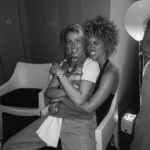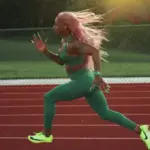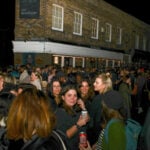The 90s girlband era was marketed as bubblegum pop and friendship bracelets, but looking back, the whole thing drips with queer undertones. Maybe it was the matching outfits, maybe it was the sweaty tour-bus intimacy, or maybe it was just that many of us clocked our first “wait a second” moment watching a music video on MTV. Whatever it was, girlbands in the 90s had a sapphic charge that never really left the culture.
All Saints
Take All Saints. Four women in baggy combats and crop tops, chain-smoking their way through R&B-tinged ballads with the kind of sulky energy that felt both intimidating and magnetic. They didn’t lean into cartoonish femininity; they lived in that androgynous sweet spot that made you wonder why every girl in your school suddenly owned a bomber jacket. Who remembers their performance on Top of The Pops? It was iconic.
Sugababes
Then there were the Sugababes (the original line-up, thank you very much). Their harmonies were rough around the edges, their styling was scrappy, and they carried themselves with a kind of don’t-mess-with-us solidarity. It wasn’t about choreo or glossy perfection. It was three girls who looked like they’d side-eye you in the smoking area, and, naturally, that made them catnip for queer audiences.
Destiny’s Child
Even the bigger, shinier exports weren’t immune. Destiny’s Child might have been pushed as aspirational glamour, but beneath the satin co-ords there was a raw chemistry. The tight-knit sisterhood, the intensity of those harmonies, it was all a little more intimate than straight audiences wanted to admit.
And let’s not forget the choreography: the lingering touches, the mirrored dance moves, the knowing glances. For queer women watching, it felt like a world where closeness between women wasn’t just allowed, it was celebrated, and broadcast on MTV every hour.
Article continues below.
Spice Girls
Of course, you can’t talk about sapphic-coded pop without mentioning the Spice Girls. Marketed as “girl power” for the masses, they were also five archetypes of queer awakening. Sporty’s tracksuits, Scary’s leopard print dominance, Ginger’s camp excess, lesbians didn’t stand a chance. They weren’t just a band, they were an early lesson in identity play: pick your Spice, find your type.
TLC
Across the Atlantic, TLC were rewriting the rulebook. Baggy jeans, condoms on sunglasses, and a refusal to perform femininity in the way the industry demanded. They were sensual and political, soft and hard all at once. Their energy was unapologetically queer-friendly, even if it wasn’t labelled as such.
B*Witched
Then you had the Irish denim fever dream of B*Witched. “C’est La Vie” was cheeky bubblegum, sure, but the double denim, flat caps, and laddish energy of their music videos gave many young girls their first pang of “oh… interesting.”
The sapphic pull of 90s girlbands wasn’t about overt representation (God knows we weren’t getting that). It was about possibility. The suggestion that girlhood could be about loyalty, intensity, desire, and something beyond the boy-obsessed lyrics we were fed. These bands gave us a language, even if it was accidental.
Fast-forward to now, and you can trace the lineage directly. The queer fandoms orbiting Little Mix or FLO aren’t an accident, they’re the echo of what came before. 90s girlbands might not have been singing to us explicitly, but they were the soundtrack to a kind of recognition. And sometimes, that’s all you need.
Nonchalant x






